Are you delivering the best user experience possible to your site visitors?
It’s crucial to commit yourself to this, since it’s a fundamental part of organic search rankings and to increase conversion rate optimization.
You may think that your site offers useful information and deserves to rank highly in Google results, but the real question to ask yourself is “what do users think?”
User optimization refers to creating a memorable user experience so that they’ll read your content and take the right actions (e.g., subscribe to your list or buy your product).
Optimizing your content for users will increase conversion rates and boost your search rankings, both of which are crucial for business success.
Here are 8 principles of user optimization that will help you improve your search rankings, as well as your conversion rate optimization, once you implement them on your site.
1. Optimize your site to load faster.
How do you feel when you visit a web page that loads like an old snail crawling uphill?
Even if the page has just the information that you’re looking for, it may not matter. That’s not a good first impression.
At 3.33 seconds, I thought my site was loading fast, but there was still room for improvement.
Nobody wants to wait for ages for a web page to load. I hate a slow loading site. And I know you do, too. I’d rather switch to a competitor’s site if the one I visited is slow, even if it’s owned by my best friend.
Time is money, and wasting either isn’t the best way to build a successful online business. People expect sites to load in two seconds or less.
A survey of 1,048 online shoppers by Akamai and Gomez revealed that 47% of people expect a web page to load in two seconds or less, and 40% will abandon a web page if it takes more than three seconds to load.
Site load time is actually the first impression you create with your prospects and potential customers.
They haven’t read your content or visited your About page yet. They don’t yet know how valuable your insights are. But your site speed definitely creates an impression.
All things being roughly equal, sites that load within 1 – 2 seconds convert better than those that take 4 – 5 seconds to load.
TagMan conducted a test, in partnership with eyeglass e-tailer Glasses Direct, to study site speed and conversion rate optimization behavior.
This test measured the impact of average page-load time on a user’s likelihood to convert on the site. Not surprisingly, it found a huge correlation. At about 2 seconds, the conversion rate started to decline, dropping by 6.7% for each additional second.
The consequences of even a one-second delay are huge. If your site loads faster, you’ll see a dramatic improvement in user engagement.
Optimizing for users means that you put them first when designing your website. Instead of choosing an impressive or beautiful design that takes ages to load, embrace minimalism; choose a fast, simple and easy to navigate website design for delivering an optimum user experience for those who use it.
Google also hates slow sites. When Google ranks slow sites above faster ones, it knows people will begin switching to other search engines. That’s not going to happen.
Google rewards sites give users the information they want quickly. This became particularly apparent when Google announced its Speed Online Tool in 2011.
From its Webmaster Central Blog, here’s a description of the tool:
Page speed is one of the ranking factors that Google uses to rank pages like yours and mine.
Nevertheless, page load time can and should be improved, wherever possible – not just for search rankings but also to enhance your overall user experience and increase conversion rate optimization.
If you want people to visit your site, refer you to other people and purchase your products, you should optimize your page elements to load within 2 seconds.
Fortunately, we have lots of options to improve our page speed. The first thing to do is to measure your current site load time.
One of the most effective ways to test your site load time, aside from checking the average (more on this later), is to compare your site against your competitors.
Follow these simple steps:
First step: Go to Whichloadsfaster.com. This simple tool has an accuracy of 100ms. There’s a short pop-up describing variance in web performance; just click “Got it” when you’ve read it.
Second step: Input your site URL in the left search box, and your competitor’s site URL in the right. Then click the “Go” button.
Third step: Compare the site load times.
Interestingly, Whichloadsfaster.com shows that NeilPatel.com loads faster than MarketingLand.com.
I know it feels good to find out your site is faster than your competitor’s site but is it fast enough for your users? Remember that as a marketer, you’re not marketing to competitors but to your target audience.
Since the average site load time is 2 seconds, it’s vital to check if your site loads within this range. Follow these simple steps to determine your current load time:
First step: Go to Pingdom Speed Test Tool. On the homepage, input your site URL into the search bar. Then click the “Test Now” button:
Second step: Analyze your site speed. For NeilPatel.com, it’s currently at 1.01 seconds, which is less than the 2 seconds industry average.
If your site load time is more than 2 seconds, you can optimize your web pages easily using the resources below:
- How to Make Your Site Load Insanely Fast
- Case Study: How an OpenCart Store Used Caching to Improve Page Load Speed
2. Leverage the CONVERT model in your landing pages.
Data from Steelhouse shows that conversion rate optimization typically ranges from 1 – 3% percent. This means that 97% of website visitors aren’t sufficiently interested in what you’re offering – at least, not yet.
Site owners are struggling to convert more website visitors into potential customers.
More than likely, your landing page attracts website visitors and prospects from different channels. Consequently, optimizing for these channels is important, because the conversion rate optimization by channels will differ.
Every site owner, content strategist and freelancer is looking for ways to increase conversion rates.
According to Bryan Eisenberg,
Most websites don’t have a traffic problem … however, every website has a conversion problem.
In reality, your site’s number of website visitors and pageviews don’t count. Conversion rate optimization is the ultimate goal.
When people visit your site or web page, they’re at different “places,” in relation to their likelihood of converting. The majority of them won’t subscribe to your list, let alone purchase your product because they hardly know you.
The visitor snapshot tells us that the bulk of our website visitors are casual. They’re the ones who surf for content on the web, land on your page and begin to make their intentions known through the things they do while on your page.
If you try to convince your first-time website visitors to purchase your product, you may be wasting effort. They’re just not ready for that yet.
Instead, channel them into your CONVERT model – a systematic funnel (also known as a relationship funnel) for educating, motivating, and ultimately persuading your potential customers to buy from you.
User optimization techniques aren’t limited to search engine optimization. It has everything to do with your conversion rate optimization techniques and how you move prospects into and through your funnel.
Let’s assume you get 500 website visitors a month from organic search. If you could convert 100 of them into buyers of a $15 product, you’ll still make $1,500 each month.
And you can scale from there.
You can see that, in order to convert website visitors into potential customers, you’ve got to understand each stage in the consumer buying process:
Problem recognition: As you probably know, being able to increase conversion rate optimization is a Key Performance Indicator (KPI) for measuring the success of search engine optimization techniques & landing page effectiveness.
As a content marketer, you may want to convert prospects as soon as they get to your page, but it doesn’t work that way.
The first stage in the customer buying process is problem recognition — this is when your target audience accepts that they’ve got a problem. This is what leads them to the search engine in search of answers.
Quick tips: Don’t try to sell at this point. Instead, tailor your content to suit these beginners. Solve their problem and don’t ask for anything in return, not even an email address.
Of course, if you provide immense value, these website visitors will want to learn more from you.
Moz knows how to cater to its first-time website visitors. They created “The Beginner’s Guide To SEO” which contained the answers to those website visitors’ most frequently asked questions about search engine optimization techniques. After reading it, people usually ask for more.
Information search: Google is the one-stop portal for getting information online. In fact, 93% of online users begin their online experience with a search engine.
Having acknowledged the problems they’re facing, prospects move on to the next stage: using Google to search for useful and relevant information.
At this stage, search users still aren’t ready to buy. They may not even know that a workable solution to their problem exists.
Search engine optimization tips: Target the right keywords, especially long-tail key phrases and use them in your article title, video and podcast tags.
Make sure that your content is relevant to the keywords people are searching for, but avoid overdoing search engine optimization techniques.
Since your target audience is searching for information, now you can ask them to subscribe to your email list or request a free trial of your product.
This helps to educate them further and give them strong reasons to stick with your brand.
Shopify, Volusion, KISSmetrics and other SaaS companies use the free trial strategy to generate leads and convert them seamlessly into long-term potential customers.
Evaluation of alternatives: With so many results and web pages on the web, people will evaluate alternatives and make decisions. Which page offers the best value for their time — yours or your competitors’?
Quick tip: As stated above, make your site load insanely fast. This will help persuade your prospects to consider your site as a reliable option.
Purchase decision: Several factors on your landing page help ideal customers make the right move. The most powerful of these factors is the headline. According to Ted Nicholas, 73% of the customer buying decision is made at the point of the headline.
If your headline isn’t compelling and powerful, people will leave. Once you have captured people’s attention using your headlines or titles, you need to also craft a thought-provoking introduction to lure them into the content.
Quick tip: Don’t try to reinvent the wheel. Instead, model your headlines from successful headlines that went viral in the past.
You can use Buzzsumo to find content that got the most social shares. Model them, make them your own and you’ll drive organic traffic, social and signals that will impact your search rankings significantly.
Purchase: At this point, you just give your prospects good reasons to believe in you. You need to establish trust with first-time website visitors by answering their questions.
Quick tip: You can get more people to buy if you use bullet points to highlight the benefits of your product or service.
Build a strong interest and desire for your product by sharing success stories and case studies and by offering a money-back guarantee.
Post-purchase evaluation: User optimization techniques go beyond the purchase. After you’ve successfully nurtured your target audience and persuaded them to buy your product, you need to follow up on their post-purchase user experiences.
Whether the post-purchase user experience is good or bad, consumers can be expected to spread the news. However, bad user experiences spread like wildfire.
Users evaluate their purchase. User experience all boils down to one thing: satisfaction. If potential customers aren’t 100% satisfied, it’ll show in their behavior.
Quick tip: Follow up with your potential customers after they’ve purchased your product. Many of them won’t use the product, so you’ve got to communicate with them and perhaps teach them how to get the most out of it.
As long as you follow the CONVERT model in your content, landing page, and website design, you’ll build a tribe of people who believe in your offerings and are ready to tell others about it.
These motivated people will share your content on social media, reference your resource guides, cite you, mention your brand and click on your links.
All of these activities correlate with off-page search engine optimization, and, before long, you’ll see an improvement in your search rankings.
3. Create a memorable content experience for users.
Content marketing drives user engagement. If you’re looking to engage users, focus on your content and design.
When it comes to optimizing both content and design for users, here’s a summary of the things you need to do:
Online consumers rely on content to inform their decisions.
Not all content is created equal. Some content drives traffic, while other content is designed to generate leads.
Spending enough time on your blog posts, the same as you would on static landing page copy, will help you infuse your content with conversion rate optimization triggers which don’t just boil down to some search engine optimization efforts.
Your headline has to be catchy, but that alone isn’t enough. After all, Unbounce estimated that over 90% of website visitors who read your headline will also read your CTA copy.
As a smart marketer, you can create a memorable content experience for users, s0 that they’ll engage with your content willingly.
Your words have to be emotionally-driven to attract the target audience you desperately want.
You’ve slaved over your blog post, formatted it in the best possible way, carefully crafted each phrase and you finally hit the “Publish” button.
And what happens
Nobody reads it.
No tweets, no Facebook shares, no comments. Nothing.
If you want to eliminate this depressing user experience, you need to understand that the average reader’s attention span is declining.
Jakob Nielson’s seminal web usability study from 1997 showed that 79% of web users scan rather than read.
Moreover, the average human attention span was 8 seconds in 2013, 1 second less than that of a goldfish. You’ve got between 3 – 5 seconds to make an impression.
If you want to successfully engage people with your content and increase your search rankings, you need to go beyond what you learned in English composition class.
Here are “8 Incredibly Simple Ways to Get More People to Read Your Content” from Copyblogger:
One post that captures readers’ attention from start to finish is Jon Morrow’s guest post entitled “How to Quit Your Job, Move to Paradise and Get Paid to Change the World.”
You can see that this post generated 10,400+ shares on Facebook and well over 600 inbound links.
4. A/B test user engagement.
Split testing helps define the focus of your marketing campaign. Econsultancy found that companies that test their campaigns increase conversion rate optimization from 28 to 32%.
You may think A/B or split testing is something only hard-core internet marketers do. But that’s not true.
It’s no longer a question: user behavior affects search engine optimization. But which types of behavioral data have more impact on search engine optimization?
For example, on average, the click-through rate for the top organic listing in any set of results is usually high. But, does the click yield a qualified lead or sales for the business?
It’s hard to split-test user engagement because “user engagement” encompasses several aspects of the user experience. What you need to do is test those elements that users engage with, such as headlines, copy, calls-to-action, and images.
When testing your headlines, be mindful of the number of headlines you test. Upworthy says they write at least 25 headlines for every story and test them thoroughly to know which one resonates best with users.
You’ll need a large amount of traffic to successfully measure the impact of that many different headlines. For most content marketers, the best approach is to test 2 or 3 headlines against each other.
Before you start testing, keep in mind a few facts from Nielsen Group:
- You have 10 – 20 seconds to make an impact with your headline.
- Users prefer straightforward headlines that offer clear benefits over more subtle or “clever” ones.
You can split test your copy, call-to-action, lead generation form and images. But, understand that every test you conduct isn’t an end to itself — rather it’s a means to an end.
When users (especially from search engines) are satisfied with the web page they clicked on, they’ll feel excited about your content. Time on site will increase, the bounce rate will drop and increase conversion rate optimization, as a result
Google is collecting data about your site users, including new and returning website visitors. Eventually, your rankings will increase – due to these user engagement metrics that excite Google.
5. Focus on your site objective and calls to action.
Are you surprised that I combined objectives with calls-to-action?
There’s a reason I did that: They’re intricately tied together. They’re also the two objects you need to work on simultaneously if you want your business to thrive.
According to the Small Business section of the Houston Chronicle, “your business objectives are the results you hope to achieve and maintain as you run and grow your business.”
Your site objective is the goal you want to achieve, while the call-to-action is how you achieve that objective.
At QuickSprout, my site objective is to help online business owners increase traffic to their sites and grow their revenue. I made sure that the objective not only appears in the title but is also very visible in the CTA.
When the site objective and the call to action are aligned, your potential customers will know instantly that your site is right for them. They won’t look elsewhere, because they can see immediately your page meets their needs.
Unbounce uses the same approach in its landing page structure. The site objective and call-to-action are in sync.
If your site objective isn’t as clear as the above examples, you shouldn’t match the headline and call-to-action. Instead, give website visitors a sneak peek of how your product works.
For example, HubChat is a platform that helps you create and grow a community. On the surface, that headline or value proposition may not make a lot of sense to beginners.
So instead of matching the call to action copy with the headline, the folks at HubChat decided to show you what it’s all about. Their button reads “learn how.”
6. Stay true to your target audience and conversion will follow.
This is pretty straight forward: Give your target audience what they want and they’ll stick around.
The opposite is also true. Nothing frustrates users as much as a web page that doesn’t give them what they need or want.
This is true for information marketers as well as ecommerce retailers. If you fail to deliver value to users (especially the 99% of new users who don’t buy on their first visit), 25% of them will abandon your site and never return.
According to Content Marketing Institute, “51% of B2B marketers indicate that they will increase their content marketing spending in the next 12 months.”
The question is, how many of these people truly understand what their target audience wants?
If your content is relevant, you’ll get a lot of engagement on your page. In turn, this will result in higher search rankings.
The mistake I see a lot of content marketers and site owners make is trying to convert website visitors into potential customers, when they don’t know what these people truly want.
Start by conducting some quick keyword research. I like keyword research because it shows me what’s going on in my customers’ minds. It reveals what they want right now.
I may not overtly target keywords in my content, but they give me some direction when creating content for my users.
To further generate questions that your target audience is asking, you can copy and plug in the keywords (e.g., lose weight in one week) into Quora’s search bar and see what potential questions you can create content around.
Start creating content to answer the questions your ideal customers are asking.
You’ll improve your search rankings in no time. Brian Dean did it. I’ve done it on several occasions. You can, too.
7. Aim for seamless keyword integration.
We all know that target keywords are important in your content and search engine optimization techniques and output. When those keywords are properly integrated, you’ll see an improvement in your organic search rankings.
Keyword visibility in search results is an indication that you’ve listened to your customers and created helpful content without trying to manipulate Google.
One thing you’ve got to recognize is the shift from keyword-focused searched results to intent-focused search results.
Prior to 2013, Google’s ranking was hugely influenced by the keywords you placed in the title, meta description, and optimized anchor texts. But that has changed.
Sure, Google still wants you to target keywords, but not for the purpose of ranking in Google. Rather, Google wants you to provide the right answers to search user questions, provide immense value and improve user experience.
These days, when you input any keyword phrase into Google, the results might be surprising, because the top listings may not have your keyword in their titles. Let’s see:
Are these search results relevant to the keyword? Absolutely! They’re relevant and useful.
So what’s going on? Over the years, Google has collected user behavior data. The goal has always been to deliver the best possible results, based on the user intent – “the purpose behind the keywords.”
In other words, why do people search for “best practices to get pregnant?”
Obviously, what these people are really after are tips to help them get pregnant.
They don’t care whether you call them “best practices” or “tips,” or share a success story with them. If your content can help them conceive, you’ll likely convert them into customers.
So when people searched for “best practices to get pregnant,” the search results from Google were more connected to “trying to get pregnant” because that’s the user intent behind the main keyword.
Ideally, you should focus your attention on long-tail keywords. They’re easier to rank for and they appeal to users who naturally gravitate towards those longer keywords when they search Google. Also, those users will be closer to a decision than those who search for head keywords.
When I began targeting long-tail keywords, I increased my search engine organic traffic to 173,336 website visitors per month.
You’re missing out on a lot of search traffic if you’re not creating blog posts around longer search queries.
Amazon makes 57% of sales targeting longer variations of head keywords. That’s because long-tail keywords – especially those with commercial intent – convert very well.
So how do you integrate long-tail keywords into your blog posts and articles in order to improve search performance?
Follow these simple tips:
Include the keyword phrase in your title naturally: This is easy to do, really. Let’s assume that you found a profitable keyword phrase, “social media dashboard tools for small business” or “affordable virtual servers.”
With a search phrase as precise and clear as these, you can rank faster in the search engines. Just integrate the phrase naturally into your title, as I did with these examples:
7 Social Media Dashboard Tools for Small Business That Work
How to Get Affordable Virtual Servers for Your Website Hosting
Remember this isn’t about manipulating search engines, but rather about providing value. Read the title aloud: does it sound like a keyword? If not, that’s good.
Write like you speak – only better: This has almost become a cliche, but it works. If you can write like you speak, you’ll naturally integrate keywords into your content.
As time goes by, your web pages will begin to rank for keywords that you never even included in your search engine optimization techniques.
That’s what Google wants – for you to write naturally, without giving preference to keyword insertion.
So if you’ve ever hooked people with your speech, then you need to leverage that ability in your content writing.
Depending on the types of content you create, sharing case studies that you personally conducted makes it particularly easy to integrate keywords naturally. That’s because you’re reporting your challenges, strategies, and results from a campaign.
A case study also allows you to hone your skills, not to make yourself look smart or special, but because when you do, you’ll better understand how your target audience feels and what you can do to meet their needs.
8. Build functional links to your web pages.
If you want to build a successful business online, you’ve got to consider search engines. Data from ImFORZA shows that “search is the #1 driver of traffic to content sites, beating social media by more than 300%.”
To drive organic traffic to your site, you need to rank highly in Google. And you need the right links to improve your search rankings.
Link building is one of the major internet marketing activities that business owners are pursuing.
Why are site owners so concerned about links?
It’s because of the relationship between Google rankings and links.
Sites like CNN, BBC, Moz, Unbounce, Facebook and others are authoritative and trustworthy because thousands of people visit them, share their content, link to them and refer others to them.
Popularity brings authority. And the more popular a site becomes, the more people will link to it.
However, not all links are created equal. A single link from Moz will carry more weight than 10 links from a new internet marketing blog.
You specifically want functional links, too — those links that remain active on referring web pages and affect your search rankings because people are clicking them.
In email marketing, functional links can generate over 30% of an email campaign’s revenue.
Although Google has evolved its algorithm to appeal more to the intended users, the focus is still on functional links.
Google gauges a site’s relevance and usefulness in large part based on the number of functional and authority links pointing to it.
In a nutshell, get people to click on your links. That’s what counts.
Sure, relevance is important. But, if you were to choose between a relevant link from an industry blog (e.g., bloggingpro.com), or a link from a much larger, more authoritative site (e.g., Entrepreneur.com) that gets clicked but isn’t as directly related to your niche, choose the latter.
Here’s the difference. The first link (from a relevant blog with a smaller target audience) may not get clicked. The second link (from a much larger, more authoritative site) will generate thousands of clicks and unique visits to your sites.
To get better results, get your links in context. Make it a part of the content.
In the eyes of Google, the second link is functional; it’s active and it should be rewarded.
The first link, though relevant, looks dead. No one is engaging with it.
Here’s an example of a functional link that will be clicked on at Entrepreneur.com:
Conclusion
When I published my Advanced Guide to search engine optimization techniques to help people understand how search engine optimization works and what they can expect from it, I was overwhelmed by the response.
It motivated me to keep consistently producing engaging content, which is exactly what many B2C marketers struggle with.
Remember that your users must be the primary focus of your blog, content and all of your efforts to promote your blog posts.
Never lose focus. Keep at it. It doesn’t matter what new algorithm update Google throws at you tomorrow — you’ll still succeed if the users are pivotal to your decisions.
Use these principles to optimize for users and watch your conversions skyrocket like never before. I currently use them and I know you’ll see results in no time.
Which principle from the list have you used to create better content for users? What results did you get?

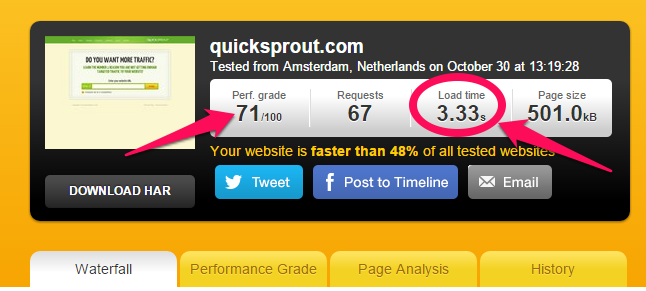



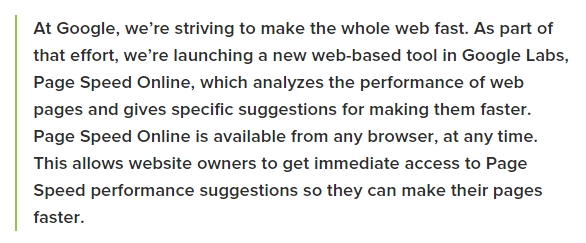



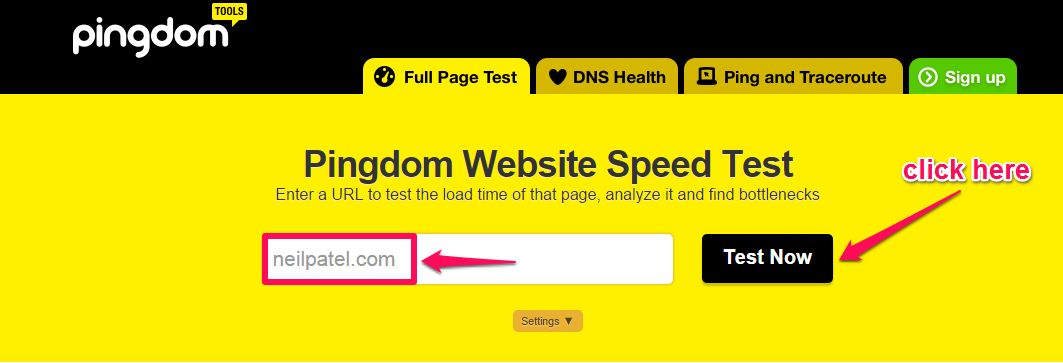





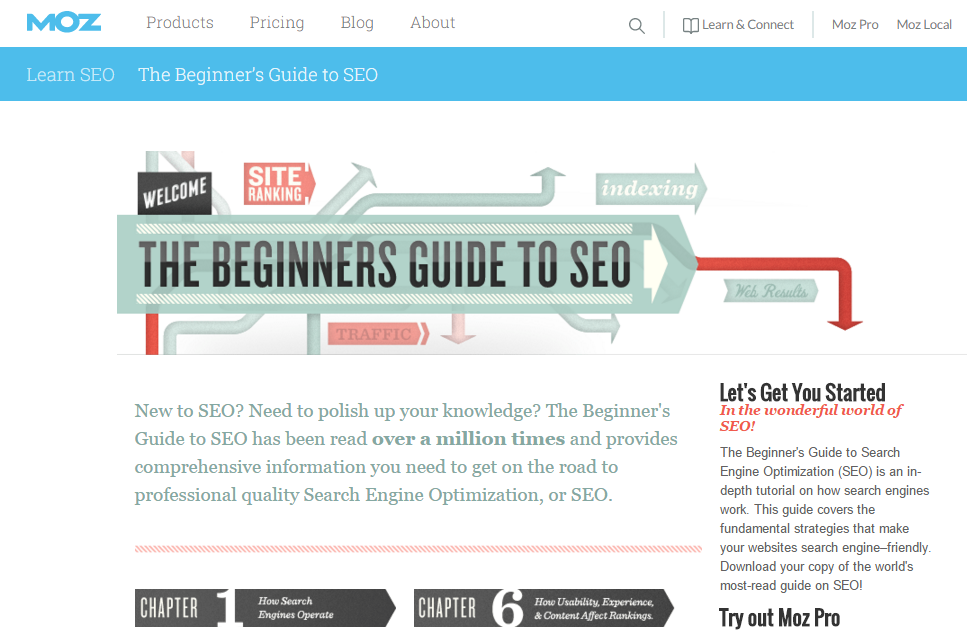





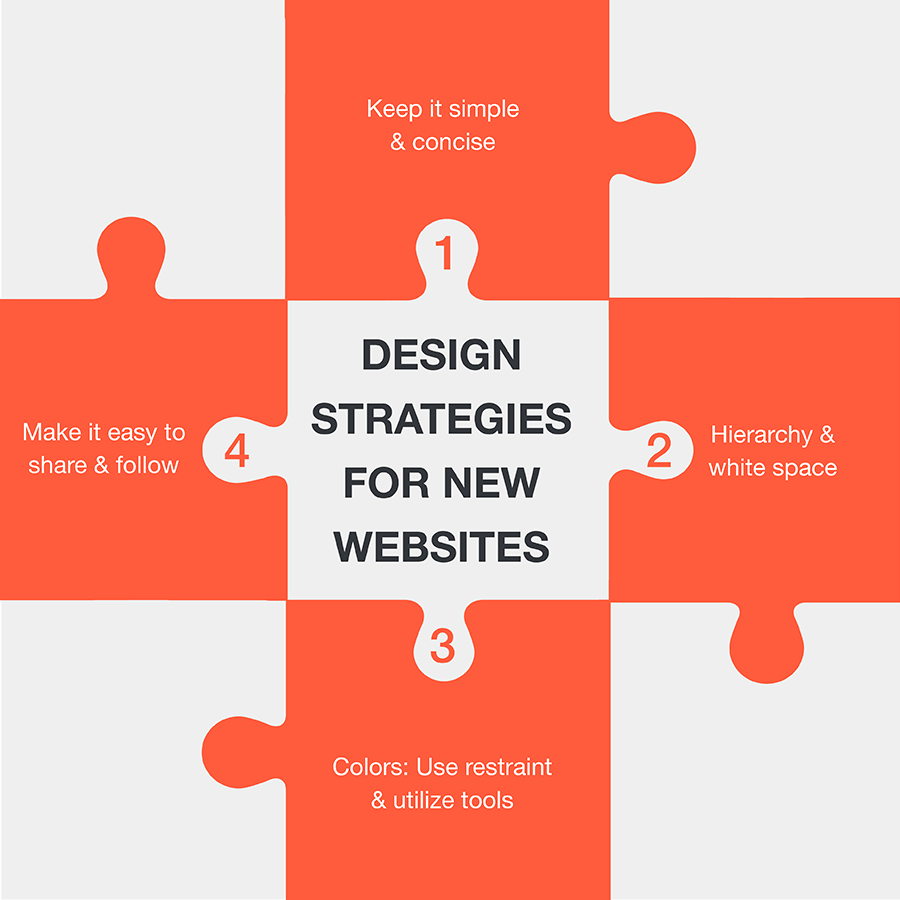



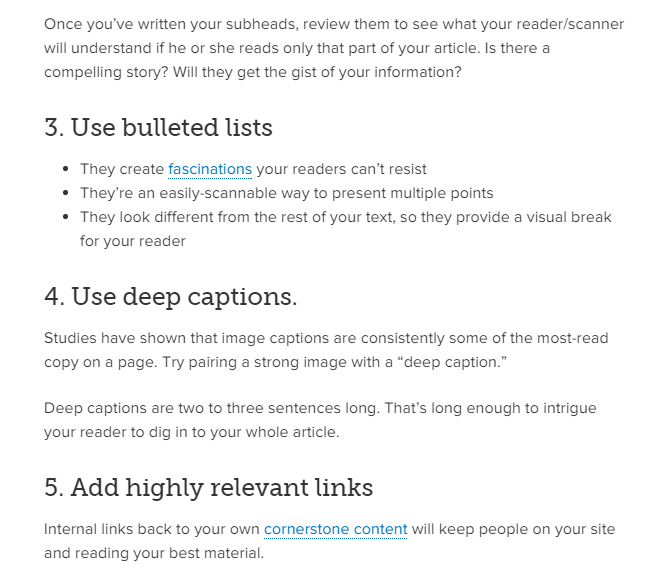






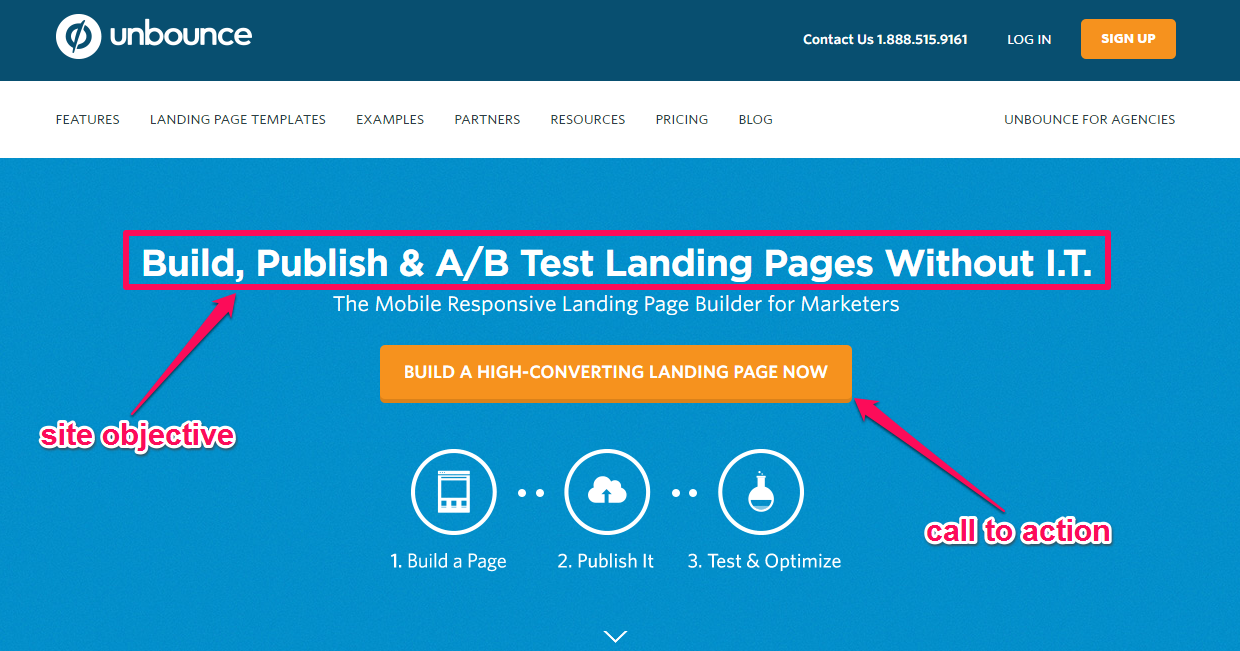




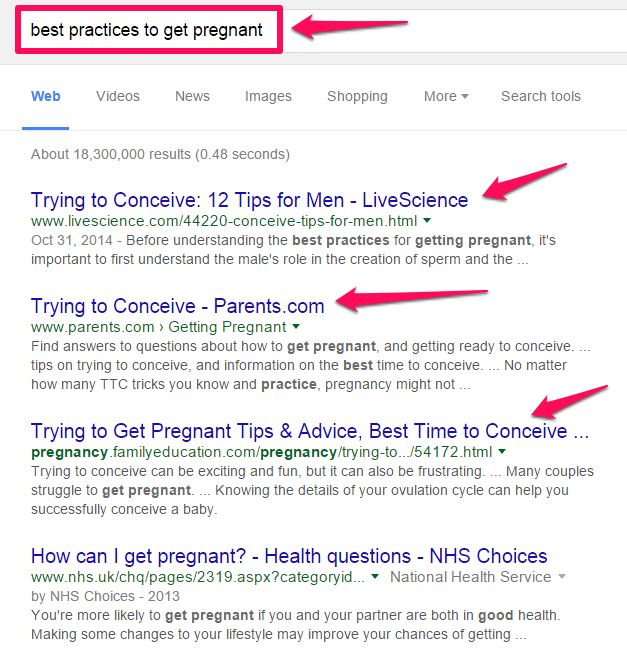





Comments (70)